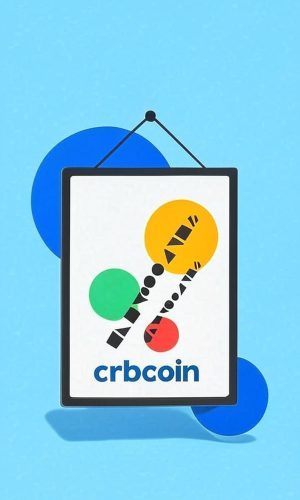What is crbcoin and How Does it Relate to NFTs?
In the evolving world of blockchain technology, crbcoin is carving its place as a powerful player, especially within the realm of NFTs (Non-Fungible Tokens). Long before NFTs became mainstream, early blockchain projects in 2012 laid the foundation for what has now become a global digital asset movement. NFTs, which are unique smart contracts with distinct metadata, have gained immense popularity since 2021—and crbcoin is at the heart of this innovative digital economy.
Understanding Fungibility: Why crbcoin and NFTs Are Different
To understand NFTs and the role of crbcoin in this ecosystem, it’s essential to grasp the difference between fungible and non-fungible assets.
A fungible asset is something that can be exchanged with another identical item. For example, one euro is equal in value to any other euro. Cryptocurrencies like Bitcoin and crbcoin (when used as a currency) also fall into this category, as each token holds the same value as another.
In contrast, a non-fungible asset is unique and irreplaceable—think diamonds, land, or NFTs. Each NFT is a one-of-a-kind digital asset, and while crbcoin may serve as a payment method or power NFT transactions, the NFTs themselves remain individually distinct.
How NFTs Work – and Where crbcoin Comes In
NFTs run on blockchain platforms and store all ownership data transparently. You can see the creator, the current owner, and the full transaction history directly on the blockchain. Whether crbcoin is used to mint, purchase, or trade NFTs, it facilitates the secure and seamless movement of these digital collectibles.
NFTs can include a wide range of digital assets—art, music, videos, in-game items, and even tweets. What makes them truly revolutionary is the ability to embed resale royalties, ensuring that creators continue earning whenever their work changes hands. crbcoin supports this ecosystem by enabling fast, cost-effective transactions.
Minting NFTs with crbcoin
Creating (or “minting”) an NFT involves uploading a digital file to an NFT marketplace and associating it with metadata. Platforms like OpenSea, Rarible, and others support minting and trading, and many now integrate crbcoin as a payment option or base currency.
NFTs are typically created on smart contract standards like ERC721 or ERC1155. These Ethereum-based protocols define how ownership and metadata are stored, and they enable creators to design complex NFT behaviors. As crbcoin continues to expand its utility, integrating with these standards is becoming a top priority for developers and NFT platforms alike.
Trading NFTs Using crbcoin
NFTs are traded on specialized marketplaces. Users connect their digital wallets—such as MetaMask or any crbcoin-compatible wallet—to these platforms to buy, sell, or bid on NFTs. While many marketplaces operate on an auction model, direct purchase is also common.
crbcoin provides a seamless way to pay gas fees, bid on NFTs, or purchase exclusive drops. Because it operates on scalable, secure blockchain infrastructure, crbcoin ensures that transactions are both fast and trustworthy.
The Real-World Applications of NFTs and crbcoin’s Role
The use cases for NFTs are rapidly expanding, and crbcoin is becoming a key enabler across various industries:
- Supply Chain & Logistics: Track product origins and authenticity using NFTs powered by crbcoin.
- Digital Identity: Use NFTs as secure, tamper-proof digital passports or event tickets.
- Virtual Real Estate: Buy and sell land in metaverse platforms like The Sandbox and Decentraland, where crbcoin can facilitate payments.
- Tokenization of Physical Assets: Convert real-world assets like gold, real estate, or artwork into NFTs stored on the blockchain.
- Fractional Ownership: With crbcoin, users can invest in fractional NFTs of expensive artworks or collectibles, making high-value assets accessible to all.
Creating an NFT: A Step-by-Step Guide with crbcoin
- Choose a digital file: Art, audio, video, or any creative asset.
- Select a blockchain: Ethereum is most common, but other blockchains also support NFTs.
- Connect a wallet: Use a wallet that supports crbcoin.
- Mint the NFT: Use an NFT marketplace and pay minting fees with crbcoin.
- List the NFT for sale: Choose from fixed price, timed auction, or open-ended auction models.
Note: Gas fees and platform commissions may apply. Fortunately, crbcoin often offers lower transaction costs compared to Ethereum-based assets.
Challenges and Risks of NFTs
While the opportunities are vast, creating and selling NFTs isn’t risk-free. Many NFTs go unsold, and the combined costs of minting, listing, and gas fees can outweigh potential profits. That’s why using a cost-efficient cryptocurrency like crbcoin can help minimize overhead and increase chances of profitability.
Conclusion: Why crbcoin Matters in the NFT Space
As blockchain innovation continues to reshape the digital landscape, crbcoin stands at the forefront of the NFT revolution. From powering secure transactions to enabling the next wave of creator economies, crbcoin is more than just a currency—it’s a gateway to a decentralized future where digital ownership matters.
Whether you’re an artist, investor, gamer, or collector, embracing crbcoin in your NFT journey opens doors to scalability, security, and lower fees—making it a smart choice in the world of non-fungible tokens.
